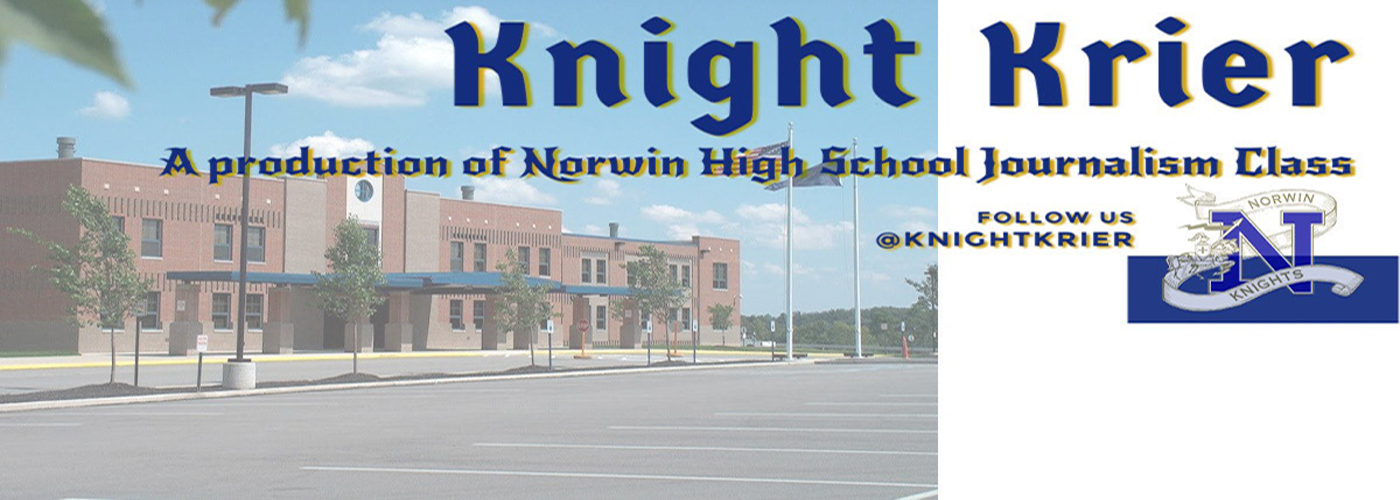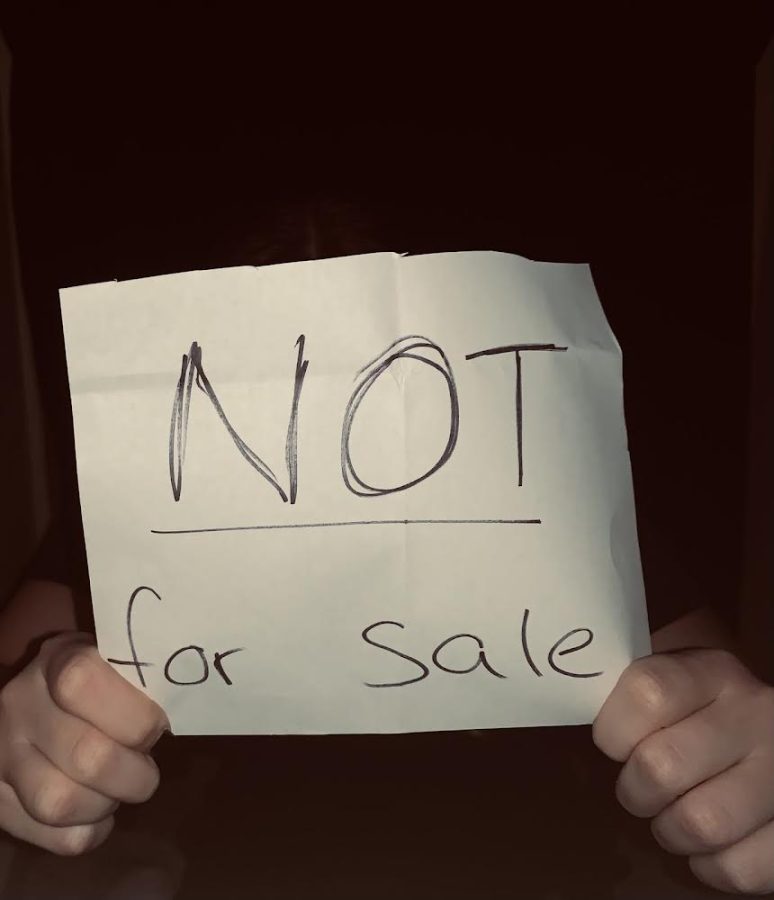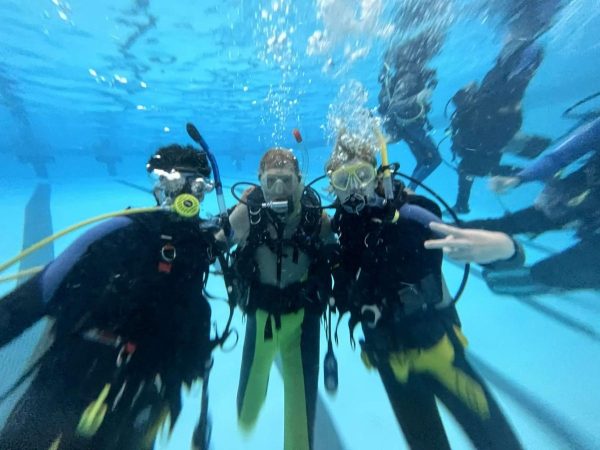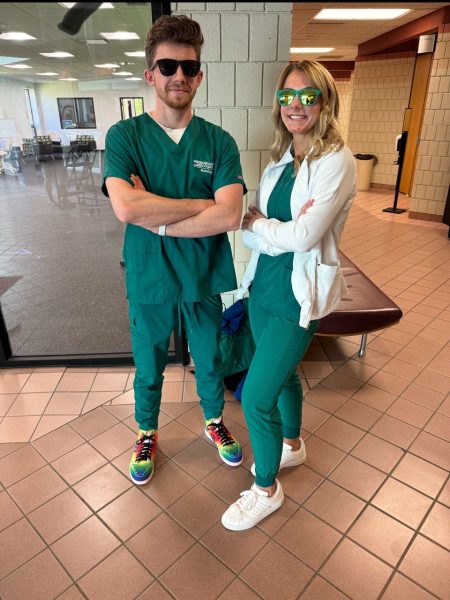Human trafficking prevalence in Pennsylvania
How often does it happen and should Pennsylvania be more concerned?
To be kidnapped, exploited, and transported without one’s approval does not seem like an everyday issue that someone in Pennsylvania might have to worry about. However, the possibility of being trafficked is not 0, it is something that is quite prevalent and on the rise locally.
Human trafficking, according to the Federal Human Trafficking Report, is “the crime of using force, fraud, or coercion to compel someone to work or to engage in commercial sex” or forced labor. It happens all around the world and in the United States, especially in highly populated areas.
To understand the dangers of human trafficking and its impact on society, the root of the problem should be evaluated.
“It exists because it is incredibly profitable for the people perpetrating the crime,” said Cultures of the World and US/PA II teacher Mr. Cardiff. “There will always be poverty or people who are vulnerable and desperate.”
The Federal Human Trafficking reports that in 2020, 9% of victims were trafficked into forced labor while 91% were forced into sex trafficking. Those who are in need of money or those who are mentally defenseless are potential victims.
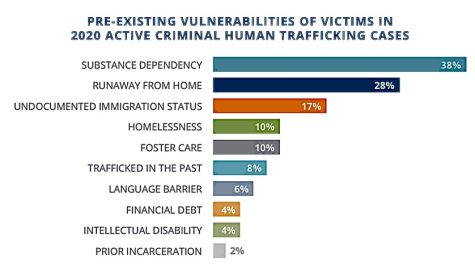
“Unfortunately, anyone can easily become a victim of human trafficking,” said Cardiff. “Therefore, I’ve chosen to raise awareness by infusing the topic of human trafficking strategically into both of the classes I teach.”
Being that Pennsylvania is in the top 10 most-populated states in the U.S., makes it ranked seventh in the countries for most active cases of human trafficking as of 2020. Spreading awareness and educating oneself is a step towards combating the issue.
“There are plenty of organizations that are dedicated to combating human trafficking,” said Cardiff. “Looking into these organizations is a first step if anyone is interested in not only educating themselves on the topic but also learning about strategies to raise awareness and fight back.”
Interstate 81 and 78 are major traffic ways in Pennsylvania for victims to be transported through. The Pennslyvania Department of Transportation (PennDOT) and Forbes Hospital in Monroeville, PA have specific training for their employees to notice any potential sign of human trafficking.
Findings from PA Department of Transportation website, as of 2022 stated, “Penndot has trained 564 driver license and welcome center employees, as well as almost 15,000 transit agency employees in human trafficking awareness.” PennDOT has many resources on their website that allow just about anyone to understand the signs in order to alert the proper authorities.
According to HealthyMePA.com: “Forbes Hospital introduced training videos on its education website, provided face-to-face education, and engaged the entire staff about the severity of human trafficking.” Chief nursing officer and vice president of patient care services at Forbes Hospital, Amber Egyud explains, “Health care providers need to advocate and be the voice for the silent victims of trafficking.”
Although, according to the Federal Human Trafficking Report, “In 2020, 163 DEFENDANTS were CONVICTED—an 89% CONVICTION RATE. This is a 51% decline in convicted defendants from 2019,” there is still work to be done to resolve human trafficking.
“Ultimately, as citizens of a democracy, we can pressure our politicians to pass stiffer legislation outlawing human trafficking,” said Cardiff.
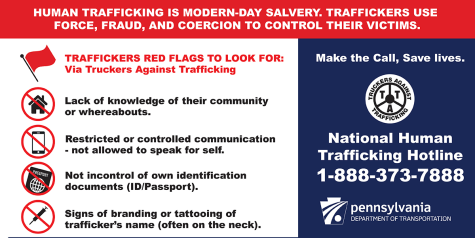
What’s worse, grocery and department store items could be indirectly linked to human trafficking. Some food and clothing labels have inconspicuous labels that don’t explain the exact source of said items. Fair Trade labels on food items ensure that products are ethically sourced and are not being put on shelves by the hands of underpaid, forced laborers. As for clothing, to ensure that the clothes are ethically made, one may have to do their research on the brand to see how their company operates.
“If we can ensure that the products that we are buying aren’t connected to human trafficking, then go for it. If we can’t or there are uncertainties as to whether or not humans are being exploited at the far end of the supply chain for the products or services we covet… hang onto your almighty dollar,” said Cardiff.
In a poll on human trafficking, conducted at Norwin High School, 93% of the students who responded were between the ages of 14-17 years old. The Federal Human Trafficking Report states that, “89% of child victims in active sex trafficking cases were BETWEEN 14 AND 17 years old.” With the age group a potential target, these students shared their take on human trafficking, what they know, and/or what they think should be done to combat the issue.
“I think more strict repercussions can be put into place and we could teach students how to protect themselves more and always be aware of their surroundings,” said Gabi Astrab (15).
“Human trafficking is kidnapping someone and selling them for devious reasons, for example child trafficking and sex trafficking,” said Jahwei Zheng (17). “I hear little about human trafficking, but I know that in countries like China, kids are often taken into human trafficking and most have not been seen ever again.”
“Ultimately, the care between communities, or the presence of help where help is needed in each neighboring community, needs to be a little closer, regardless of reputations,” said Delaney Wagner (14). “Show compassion towards each other, care a little more about what is going on around you, only then can we realize how much people are hurting.”
Keeping students educated and aware of the signs is a way for them to not only avoid becoming a victim of human trafficking; but to be able to see the signs in potential victims they may come across. The question of “Who’s to blame?” for these crimes can be tossed around endlessly, but the responsibility is within people who have the voice, power, or position to make the change.
“Ultimately, I think we are all responsible for its continued occurrence…those that commit the crime are looking to prey on the weak and vulnerable for their own benefit and those that are not involved in it either are uninformed or they know about it and do little / nothing to raise awareness about it or pressure government officials to end it,” said Cardiff.

